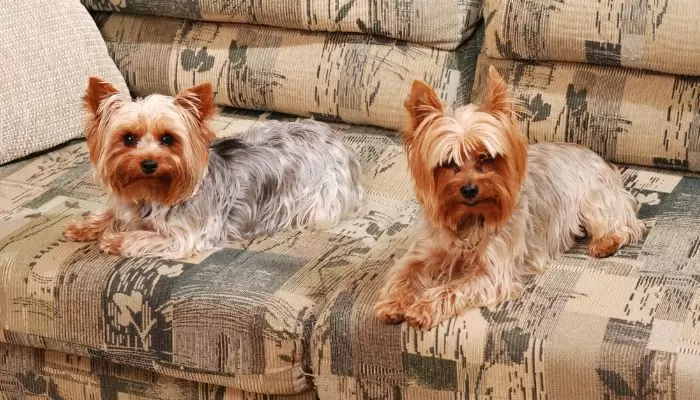
A Yorkie looks like a small, toy-sized dog. They typically have long, silky hair that is parted down the middle of their back. Yorkies also have big ears that sit high on their head. Their tails are usually long and pointy. Yorkies come in a variety of colors, but the most common are black and tan.
Table of Contents
Are There Different Types Of Yorkies?
Yes, there are different types of yorkies. The most common type is the Yorkshire Terrier, which is a small dog breed that originates from England.
There are also teacup yorkies, which are even smaller than the Yorkshire Terrier. Blue and tan yorkies are another type of yorkie, and they are recognized by the American Kennel Club. Black and tan yorkies are also a type of yorkie, but they have long hair.
Yorkies are generally small dogs, but the size can vary depending on the type of yorkie. The Yorkshire Terrier is the most common type of yorkie, and they typically weigh between 4 and 7 pounds. Teacup yorkies usually weigh less than 4 pounds, and blue and tan yorkies typically weigh between 6 and 9 pounds. Black and tan yorkies with long hair usually weigh between 10 and 15 pounds.
When choosing a yorkie, it’s important to find a reputable breeder. Yorkies are generally healthy dogs, but there are some health conditions that are more common in certain types of yorkies. For example, teacup yorkies are more prone to health problems because of their small size. Blue and tan yorkies may also be more prone to health problems because of their coat color. Black and tan yorkies with long hair may also be more prone to health problems because of their coat type.
What does a teacup Yorkie look like?
A teacup yorkie is a very small breed of yorkshire terrier. They are known for their small size, and they are also one of the most popular breeds of dogs. Teacup yorkies usually weigh between 2 and 4 pounds, and they are usually between 6 and 9 inches tall. They have long, silky hair that is usually black and tan. Yorkies are very active dogs, and they are also very intelligent.
How do you know if a Yorkie is full breed?
If you want to know if a Yorkie is full breed, there are a few things you can look for. First, most purebred Yorkies are born black and tan. So if the puppy is born black, it’s likely not a full-bred Yorkie. Additionally, full-bred Yorkie puppies will usually have a black and tan coat, while mixed breed yorkies can come in a variety of colors. Finally, you can ask the breeder if the parents are both purebred Yorkies. If they are, then it’s likely that the litter of puppies is also purebred.
Where Do Yorkies Come From?
The Yorkshire Terrier, or Yorkie, is a small breed of dog that originated in England. The first Yorkies were bred in the county of Yorkshire, hence the name. Yorkies were originally bred to be ratters, which is why they have such a high prey drive even today. These days, however, Yorkies are more commonly kept as pets. They make great companions for people of all ages and are relatively easy to care for.
Yorkies typically weigh between 4 and 7 pounds and stand about 8-9 inches tall at the shoulder. They have a long, silky coat that can be either blue and tan or black and tan in color. Yorkies are very intelligent and trainable dogs, but they can also be stubborn at times. They are active little dogs that need plenty of exercise and playtime.
If you’re thinking about getting a Yorkie pup, be prepared for some grooming upkeep. Their long coats need to be brushed several times a week to prevent tangles and matting. Yorkies are generally healthy dogs with a lifespan of 12-15 years, but like all breeds, they are susceptible to certain health conditions such as dental problems, patellar luxation, and tracheal collapse.
